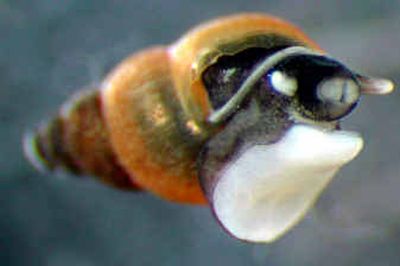Survey finds dozens of non-native species in lower Columbia River

PORTLAND – The first comprehensive survey of nonnative aquatic species in the lower Columbia River shows 81 species have been introduced since the mid-1800s, including fish, aquatic plants, crustaceans and worms.
Three universities joined forces with river ports to assess the economic and ecological impacts of growing numbers of nonnative species that threaten coastal and freshwater systems throughout the Pacific Northwest.
The results were released Tuesday. They showed that a new introduced species was discovered in the lower Columbia River about every five years from the 1880s to the 1970s.
In the last decade, however, a new nonnative invertebrate species was discovered about every five months, according to Paul Heimowitz of the U.S. Fish and Wildlife Service in Portland.
Some of the species listed in the study are considered invasive and a threat to native fish and other aquatic life, but at least 20 of the 81 introduced species are familiar ones, such as bass, sunfish, and catfish that were intentionally introduced in Oregon in the late 1800s and early 1900s.
But many of the other species arrived accidentally, typically with ballast water from international ships or as “hitchhikers” on recreational equipment, such as small boats.
The study noted that most of the introduced species in the lower Columbia come from other areas of North America, especially fish, but 34 percent of the invertebrates — such as crustaceans and shellfish — came from Asia.
“Oregon has come a long way in addressing the aquatic invasive species issue in ballast water with the support of the ports and shipping industry, but this study shows we have a lot more work to do,” said Mark Sytsma, who heads the Aquatic Bioinvasion Research and Policy Institute, a joint venture of Portland State University and the Smithsonian Institution.
Eight of the nonnative species found by the survey had not been documented previously in the lower Columbia River.
New organisms introduced since 1990 include the tiny, self-cloning New Zealand mudsnail, first discovered in Youngs Bay, near Astoria. It has spread to every bay along the lower river, reaching a density of nearly 400,000 snails per square meter in some bays, according to the study.
“They are much more widespread in the lower river than we thought,” Heimowitz said.
The survey also showed that, in just a decade, the marine estuary system along the lower river has shifted to populations of two recently introduced copepods, or tiny crustaceans, which replaced another nonnative species that had dominated in the early 1990s.
The survey also noted that large areas of shallow-water habitat are infested with the noxious aquatic weed Eurasian water milfoil.
Congress authorized such studies in 1996 with the National Invasive Species Act but funding was not available until recently, Heimowitz said.
Researchers reviewed more than 300 scientific papers and publications dating back to the 19th century to determine whether a species was native, in addition to sampling 134 sites from the Bonneville Dam to the Pacific Ocean.
“There definitely is some detective work that goes on in these studies,” Heimowitz said.
The survey was a joint project by Portland State University, the University of Washington and Oregon State University, with the support of the ports of Portland and Astoria.
The scientists plan to expand the survey in 2005 to cover the middle reaches of the Columbia River and lower Snake River.